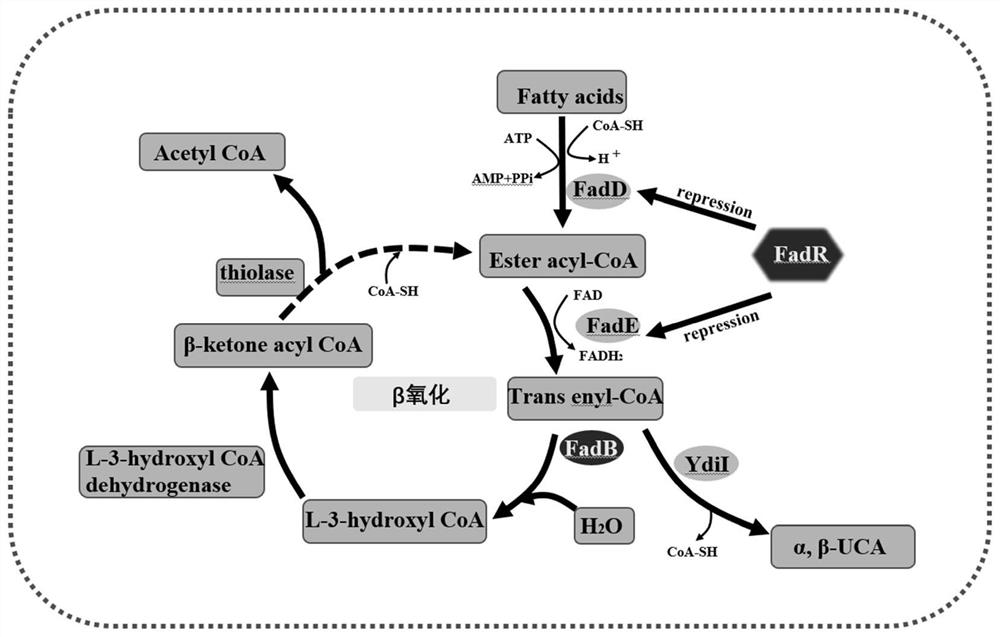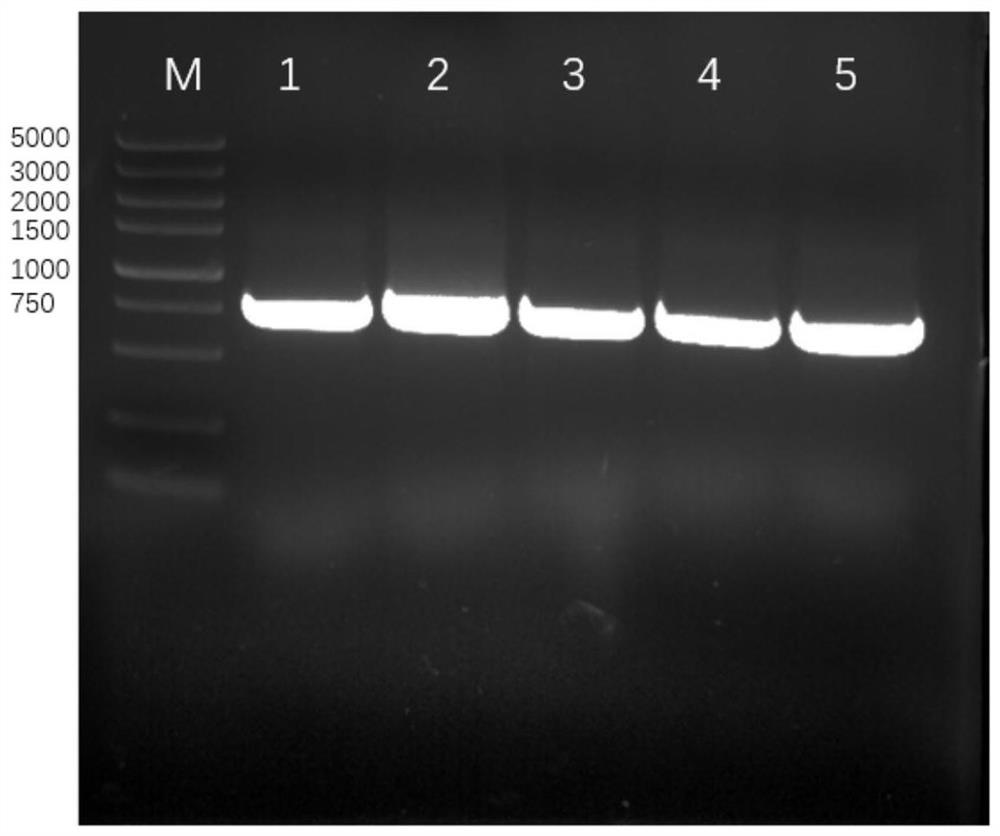A method for preparing α, β unsaturated fatty acids by using fatty acid as raw material and utilizing Escherichia coli engineering bacteria
A technology of Escherichia coli and engineering bacteria, applied in botany equipment and methods, biochemical equipment and methods, methods based on microorganisms, etc., can solve problems such as unreported technology
- Summary
- Abstract
- Description
- Claims
- Application Information
AI Technical Summary
Problems solved by technology
Method used
Image
Examples
Embodiment 1
[0082] Example 1: PCR amplification and plasmid construction of Escherichia coli acyl-CoA thioesterase genes ydiI, FadE and FadD.
[0083] PCR amplification primers were designed according to Escherichia coli FadE, ydiI and FadD, the nucleotide sequences of the upstream primers were shown in SEQ ID NO.1, 3, and 5, respectively, and the nucleotide sequences of the downstream primers were shown in SEQ ID NO.2, 4 , as shown in 6;
[0084] The nucleotide sequences of Escherichia coli FadE, ydiI, and FadD are shown in SEQ ID NO. 19, 20, and 21, respectively.
[0085] The construction of the recombinant plasmid petDuet-FadE includes the following steps:
[0086] Using Escherichia coli BL21 genome as a template, amplify ester acyl coenzyme dehydrogenase FadE, the nucleotide sequence of the upstream primer is as shown in SEQ ID NO.1, and the nucleotide sequence of the downstream primer is as shown in SEQ ID NO.2, Then, the petDuet plasmid was digested and purified with Hind111, and ...
Embodiment 2
[0106] Example 2: Construction of strains with gene deletion of ΔFadRB
[0107] (1) The specific steps of constructing a gene deletion ΔFadRB strain are as follows:
[0108] ① The pkd46 plasmid was transformed into BL21 competent cells to construct recombinant strain pkd46-BL21. After culturing and screening, the recombinant strain pkd46-BL21 utilizes CaCl 2 Processed to make pkd46-BL21 competent;
[0109] ② Using the genome of Escherichia coli BL21 as a template, amplify the upstream homology arm FadR1 of the operon gene, the nucleotide sequence of the upstream primer is shown in SEQ ID NO.7, and the nucleotide sequence of the downstream primer is shown in SEQ ID NO.8 shown; take the Escherichia coli BL21 genome as a template, amplify the downstream homology arm FadR2 of the enoyl-CoA hydratase gene, the nucleotide sequence of the upstream primer is as shown in SEQ ID NO.9, and the nucleotide sequence of the downstream primer As shown in SEQ ID NO. 10; using the pkd3 plasm...
Embodiment 3
[0174] Example 3: Recombinant plasmids pet28a-sumo-YdiI and petDuet-FadE-FadD plasmids were respectively transformed into strains with gene deletion of ΔFadRB to obtain strains of recombinant bacteria YED-ΔFadRB;
[0175] (1) Preparation of competent cells
[0176] ①Pick a single colony of Escherichia coli YED-ΔFadRB (or pick a preserved strain) and inoculate it into 1ml of liquid LB medium, and cultivate overnight at 37°C and 200rpm;
[0177] ②Inoculate 1ml of bacterial liquid into 50ml of LB medium, and cultivate to bacterial liquid OD at 37°C and 200rpm. 600 is about 0.5;
[0178] ③Place the bacterial solution on the ice-water mixture for 10min, and pre-cool a 10ml centrifuge tube at the same time;
[0179] ④ Transfer the bacterial liquid to a centrifuge tube, centrifuge at 4°C and 5000 rpm for 10 min to collect the bacterial cells;
[0180] ⑤Add 5mL of pre-cooled 0.1M CaCl to each centrifuge tube 2 solution, resuspend the cells, and then add 0.5mL of pre-chilled 0.1M C...
PUM
 Login to View More
Login to View More Abstract
Description
Claims
Application Information
 Login to View More
Login to View More - R&D
- Intellectual Property
- Life Sciences
- Materials
- Tech Scout
- Unparalleled Data Quality
- Higher Quality Content
- 60% Fewer Hallucinations
Browse by: Latest US Patents, China's latest patents, Technical Efficacy Thesaurus, Application Domain, Technology Topic, Popular Technical Reports.
© 2025 PatSnap. All rights reserved.Legal|Privacy policy|Modern Slavery Act Transparency Statement|Sitemap|About US| Contact US: help@patsnap.com



